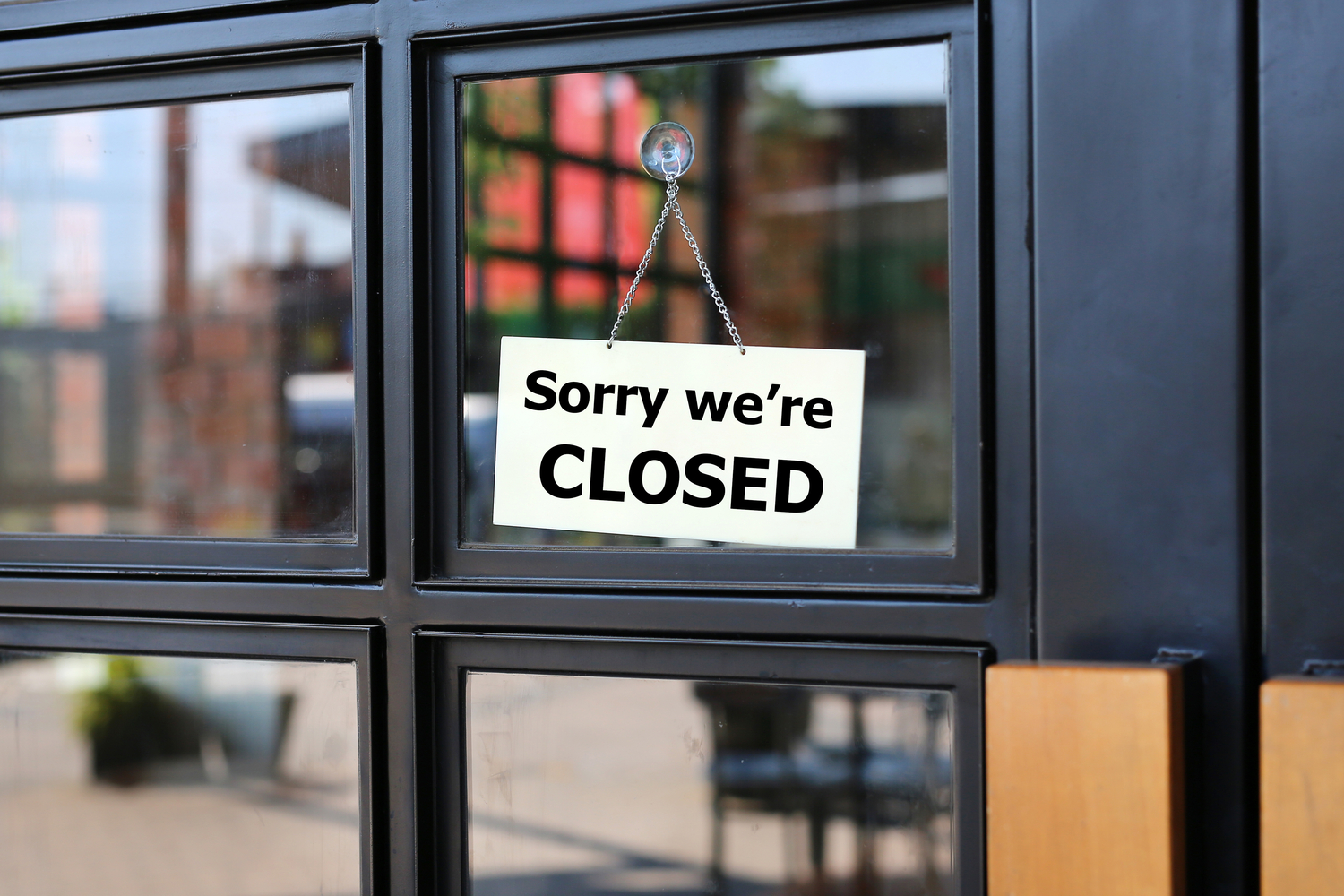Meet in the Middle: Crypto Companies and Banks Are Evolving Together
(Robert Alexander/Getty Images)
Meet in the Middle: Crypto Companies and Banks Are Evolving Together
Some say that meaningful change happens gradually. Others insist it erupts unexpectedly. This week, we saw that both are true.
Earlier this week, the Wyoming Banking Board voted to approve the application from San Francisco-based crypto exchange Kraken for a Special Purpose Depositary Institution (SPDI) banking charter. Yes, one of the crypto industry’s oldest exchanges has become a bank.
This is a big deal, one that heralds a coming transformation of the crypto asset industry. Market participants and commentators understandably reacted with glee and surprise. Both are warranted, yet both overlook the bigger shift that has been building up for some time, and which will have an even more significant change on how finance functions.
Good news
First, to understand the excitement, let’s look at what this means for Kraken.
A SPDI is a bank charter, but it is not a traditional bank in that it can’t make loans. It also is not required to have FDIC insurance, since there is no solvency risk stemming from fractional reserve banking – 100% of its deposits have to be backed by assets on hand.
Pending approval, this should give the firm’s subsidiary Kraken Finance access to an account at the Kansas City Federal Reserve, which gives it access to the U.S. payments system. This will make it easier for clients to move funds on and off the exchange, as well as allow for the launch of new products such as debit cards, IRA accounts and wealth management services.
Also, Kraken Finance will be able to custody both fiat and crypto assets, with more oversight and legal protection for clients than a trust company can offer. Client confidence will get a further boost through the additional capital that banks are required to hold, and through the required contingency account.
And, although it is chartered in Wyoming, Kraken Finance will be able to operate in most U.S. states under a unified regulatory framework through reciprocity agreements, possibly even returning to operate in New York, more than five years after its public departure in response to the BitLicense.
This is good for Kraken, but also for the industry as a whole, as it will facilitate onboarding for a range of businesses and institutions that are only comfortable entrusting financial transactions to a bank. It also takes steps towards solving the perennial problem many crypto businesses have in getting a banking license for operational needs. Opening an account at a digital asset bank should support both fiat and crypto liquidity. And the emergence of a competitor to the few banks serving digital asset businesses should give customers greater choice and better conditions.
And finally, Kraken is likely to be the first of many firms moving to take advantage of the business opportunity that being a digital asset bank promises. This will continue to boost institutional confidence in the crypto industry, and support the growth of related banking services that further incorporate digital assets into users’ daily lives.
Unexpected news
Now, let’s look at why this was a surprise.
A group of visionary regulators and advocates started work in 2018 on the painstakingly detailed process of drawing up legislation that takes crypto assets into account. Caitlin Long, one of the aforementioned advocates, hosted a panel at our Invest conference last year that went into many of the details, and has both written and spoken about it at length. So, no surprise there.
And a Kraken job ad in December of last year hinted that applying for the SPDI charter was in their plans. Yet Kraken’s win in being the first caught many off guard, because Kraken has not traditionally been seen as, well, the type to choose the banking route.

The exchange was founded in 2011 (when the bitcoin price averaged $5.60) by Jesse Powell, one of the industry’s earliest advocates, and an outspoken critic of regulatory overreach.
What is one of the original crypto companies doing becoming a bank? Has it given up its principles to join the “system” bitcoin was supposed to circumvent?
The answer is no, it hasn’t. On the one hand, Powell has shown from the beginning that he will take steps to ensure fair access to cryptocurrencies, and has worked at getting strong banking relationships to support his business. Becoming a bank is an efficient way to cement the firm’s standing in the financial community, which benefits its clients.
On the other hand, the “system” that Kraken is joining is changing. And that has been the point all along.
Important news
Here we get a glimpse of the bigger shift I mentioned above. It’s not that crypto businesses are jumping through hoops to become respectable. That is happening to some extent, and it’s good for the industry. Respectability brings mainstream acceptance and investment inflow. And with its SPDI application, Kraken is reinforcing its reputation as one of the more innovative institutions in our sector.
The bigger shift is that traditional finance is changing to adapt to the crypto industry.
The SPDI is a new type of bank charter that was created with the crypto industry in mind. A new set of definitions and protections was drawn up to take into account crypto asset characteristics. A state passed financial legislation for the crypto industry.
What happened this week is not so much confirmation that crypto businesses are joining traditional finance. It’s more, to some extent, the other way around.
Many of us working in this industry are here because we believe that we are witnessing the emergence of a new economic system that will reform capital markets and finance. We have all faced cynics who insist that traditional finance won’t change, that cryptocurrencies are a threat to stability and order and that authorities won’t let this scale of innovation take root.
This week proved the cynics wrong.
The main story is not that one of the original cryptocurrency businesses, which supports the underlying principles of distributed governance, has joined the legacy financial system.
The story is more one of traditional finance adapting.
So far, this is both a small step (Kraken is one company, Wyoming is one state, the U.S. is one country) and a big one. The crypto industry wants reasonable regulation, for security and respectability. But it knows that traditional rules can’t apply. So it has convinced the rule makers to make new ones.
This week it showed that it can get the traditional side to meet it halfway. If you were wondering how the crypto industry could transform traditional finance, this is how it happens.
Anyone know what’s going on yet?
Bitcoin started to recover some ground this week, although it is still down for the month.

Stocks generally continue to languish, with the tech sector suffering a drawn-out hangover from recent exuberance. The market as a whole seemed to be feeling frustration that the U.S. Federal Reserve chairman Powell’s remarks this week – in his last scheduled public appearance before the U.S. election – didn’t offer more clarity on inflation expectations.
Amid deepening fatigue around the persistent uncertainty (not just about inflation but also about the economic recovery, a vaccine, can our kids stay in school and so much more), concern about the fate of the U.S. dollar seems to be gathering strength. Even renowned fund manager Ray Dalio was caught hinting that “other asset classes” will pick up strength from the loss of faith in fiat currencies.
The question remains how long before this growing tension starts to really overrule the persistent faith that the Fed will keep stock markets afloat. The declines we’ve seen so far this month may hint that the concern is starting to make itself felt in the indices – or, they could just be a breather before another spurt of energy.
Be sure to listen to my colleague Nathaniel Whittemore interview Raoul Pal for a harsh take on the inefficacy of monetary policy and the need for a new economic paradigm.
CHAIN LINKS
Michael Saylor, the founder of MicroStrategy, revealed that his company has acquired an additional $175 million in bitcoin, which brings his firm’s total spend on cryptocurrency to approximately $425 million. TAKEAWAY: While it is exciting to see such public validation coming from outside our industry, it is a bit worrying when corporate treasury decisions start to be treated as publicity for a concept. It’s also disconcerting to see the resulting (or coincidental?) bump in the share price touted as a reason other corporate treasurers should put company funds into cryptocurrencies. I say this as someone who believes in bitcoin’s long-term potential (not investment advice!). I also say this as someone concerned about the pressures CFOs face in their daily jobs, and the implied assumption that putting corporate funds into bitcoin is risk-free. It isn’t.
(Nathaniel Whittemore’s interview of Michael Saylor is a compelling listen.)
Over $1 billion worth of bitcoin has been tokenized on Ethereum, equivalent to 0.42% of the total BTC supply and up from less than $7 million in January. TAKEAWAY: This is astonishing growth. The concept is compelling. It’s not just about depositing your bitcoin into a specific wallet in order to get a corresponding amount of an Ethereum-based token that you can then deposit in another wallet to get yield. It’s also fascinating for the way assets can “live” on more than one blockchain at once, even if just temporarily. We’ll no doubt be hearing a lot more about this.

The RGB protocol, currently in beta, is a second layer network that aims to bring smart contracts and tokenized assets to Bitcoin. TAKEAWAY: This reminds us that Bitcoin may have a simple and resilient protocol, but it is also an evolving technology. While the base code may be difficult to change, developers are working on code layers that connect to the Bitcoin blockchain and that allow for additional functionalities. Some of these may one day end up being a key driver for bitcoin demand, much like the growing demand for applications on the Ethereum blockchain was one of the factors that boosted the price of its native token, ETH.
A leaked version of rules to be issued later this month by the European Commissionproposes an all-encompassing set of regulations covering the trading or issuance of digital assets, effectively treating them the same as any other regulated financial instrument. TAKEAWAY: The legal clarity will be welcomed by many, although Europe has a well-earned reputation for passing blanket rules with good intentions that end up having the opposite effect than that intended. That said, European regulators have on the whole been supportive of blockchain technology, and some countries have encouraged the development of digital asset market infrastructure, so this could end up being a positive development.
Blockchain services firm Diginex is officially merging with publicly traded 8i Enterprises Acquisition Corp., a special purpose acquisition company (SPAC). The merger is a key part of its plan for a “backdoor” Nasdaq listing. TAKEAWAY: Diginex’s businesses include crypto derivatives exchange EQUOS.io, digital asset trading technology platform Diginex Access, securitization advisory firm Diginex Capital, as well as a digital asset custody provider and an investment management business. Some see irony, as it represents the merging of decentralized assets with centralized markets (a crypto company listing on Nasdaq). Others see perfect synergy, however, as Diginex covers a range of crypto-focused businesses that are pushing the innovation envelope for capital markets. Either way, it heralds the eventual merging of decentralized and centralized concepts, and a maturation of crypto market infrastructure.
According to blockchain forensics firm Chainalysis, the number of “young investment” wallets (those that are one to three months old and rarely send bitcoins) has jumped to the highest level since February 2018, double that of six months ago. TAKEAWAY: While it’s hard to draw clear conclusions from address data, this does hint at growth in interest in cryptocurrency from new entrants into the market. The theory is that new addresses used for transactional purposes would have outgoing as well as incoming transactions – those that are almost all incoming are more likely to be investment accounts.

According to a report in Bloomberg,India plans to ban trading in cryptocurrencies. TAKEAWAY: So, India has been sending mixed signals. It allows banks to offer services to crypto exchanges. And then leaks a possible ban on crypto exchange activity? This is worth watching because India is a potentially massive market. Even apart from the sheer size of the population, there’s the recent painful experience with demonetization and the relatively high inflation rate.
Leading crypto derivatives exchange Deribit is seeing increasing investor interest in bitcoin options that would profit from prices rallying as high as $36,000 by the end of 2020. TAKEAWAY: I’d say this is nuts, but it obviously makes sense to some people.

For those looking for more clarity as to what’s going on in crypto market infrastructure, this is your week.
- Ark Invest published, in collaboration with Coin Metrics, a paper that explores bitcoin as a monetary asset, focusing on its trading volume evolution and outlook, liquidity and the potential impact of institutional investment.
- Binance Research put out an overview of crypto market infrastructure, with a focus on the evolving role of prime brokers, and a prediction that traditional brokers will continue to move into the crypto industry.
- Deribit published a note that points out how blockchains’ relatively slow responses hinder trading opportunities, given the need to move collateral around for leveraged positions – and how custody services are evolving to solve for this.
Podcast episodes worth listening to:









